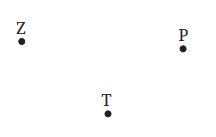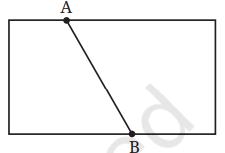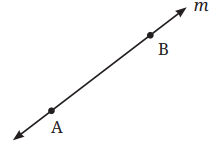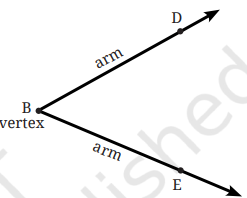Point
- Definition: A point represents a specific location but has no dimensions (length, breadth, or height).
- Representation: Points are marked as capital letters (e.g., Point A, Point B).
Line Segment
- Definition: The shortest path between two points is called a line segment.
- End Points: A line segment has two fixed endpoints (e.g., line segment AB).
Line
- Definition: A line is a straight path that extends infinitely in both directions.
- Notation: A line passing through two points A and B is written as line AB or sometimes by a small letter like “m.”
Ray
- Definition: A ray starts at one point and extends infinitely in one direction.
- Example: A ray is represented as ray AB, where A is the starting point.
Angle
- Definition: An angle is formed by two rays with a common starting point (vertex).
- Naming Angles: Angles are denoted by three points (e.g., ∠ABC, where B is the vertex).
Comparing Angles
- Superimposition: Angles can be compared by placing them on top of each other, ensuring the vertices overlap.
Making Rotating Arms
- Activity: Create rotating arms using paper straws to understand the concept of angles and compare their sizes.
Special Types of Angles
- Right Angle (90°): Half of a straight angle.
- Straight Angle (180°): Two right angles form a straight line.
Measuring Angles
- Using a Protractor: Angles are measured in degrees using a protractor. One full turn is 360°, half turn is 180°, and a right angle is 90°.
Drawing Angles
- Steps: Use a protractor to draw angles of specific measures (e.g., 30°).
- Game: Estimate and draw angles without using a protractor to develop intuition.
Types of Angles
- Acute Angle: Less than 90°.
- Obtuse Angle: Greater than 90° but less than 180°.
- Reflex Angle: Greater than 180° but less than 360°.
Key Concepts
- Line Segment: Fixed length with two endpoints.
- Line: Extends infinitely in both directions.
- Ray: Extends infinitely from one starting point.
- Angles: Formed by two rays, measured in degrees.





better